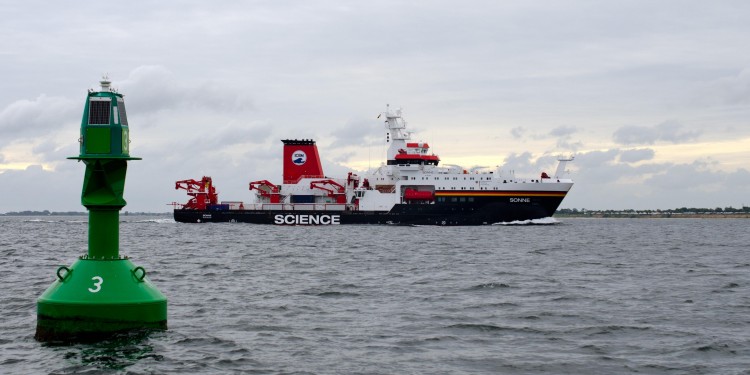
Geochemists set sail with research vessel "Sonne"
On March 6, 35 international scientists set off on a special research trip. With the research vessel "Sonne" they set off from Cape Town in South Africa into the Indian Ocean to study the submarine uplift "Marion Rise" on the so-called Southwest Indian Ridge. Also on board are four researchers from the Institute of Mineralogy at University of Münster.
The expedition will be led by Prof. Dr. Jürgen Koepke from the Leibniz University of Hannover. The aim of the expedition is to find out how the Marion Rise was formed – a tectonic uplift under the sea surface south-east of South Africa, which even reaches the surface in the form of Marion Island. The uplift is related to the Southwest Indian Ridge that occurs there due to the drifting apart of the African and Antarctic continental plates. For their investigations, the researchers intend to map the seafloor in high resolution and take samples of the bottom. For this purpose, they are using, among other things, the diving robot "QUEST" from the MARUM Center for Marine Environmental Science of the University of Bremen.
Livestream from the sea bottom
Until the "Sonne" returns to the port of Durban on 12 April, the crew will report directly from the ship at www.geo.uni-hannover.de/de/expedition-marion/mission/. A video livestream set up by the MARUM research centre shows the dives. It is available at www.youtube.com/watch?v=5TyN3FmFLGY.
